13 Workplace Dramas That Outdo Any Soap Opera

Leave it to people wandering on Google Earth to stumble upon the world’s newest — and weirdest — places ever! Like this mysterious pyramid discovered in Antarctica. Soon enough the internet blew up with all sorts of theories regarding this unusual shape. Could it be a sign from a different life form? Is this pyramid indeed natural, or is it man-made?
For starters, it’s not the first time we’ve discovered a pyramid in the Antarctic. The first one was observed by the British Antarctic Expedition in the 1910s and kept secret for a long time. Its discovery being kept hidden only added to the mystery. A second such structure was discovered in 2016, which further increased the interest in the matter.
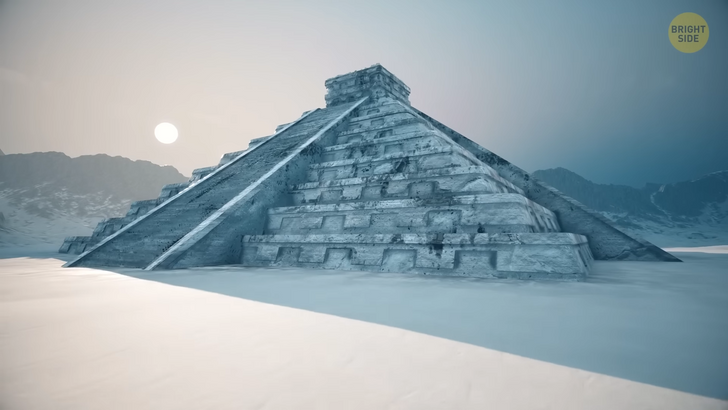
The mystery was soon enough deciphered by scientists: these formations are just mountains. They’re located near the Ellsworth Mountains, a range over 250 miles long. So, they are just mountain peaks that have broken through the ice sheet. As for their particular shape: it’s just a coincidence.
Pyramids are found throughout nature. The Matterhorn in the Alps and Mount Bulandstindur in Iceland, for example, are quite similar in terms of shape. As for the official name of these peaks, they’re called nunataks, or peaks of rock peeking through a glacier or an ice sheet.
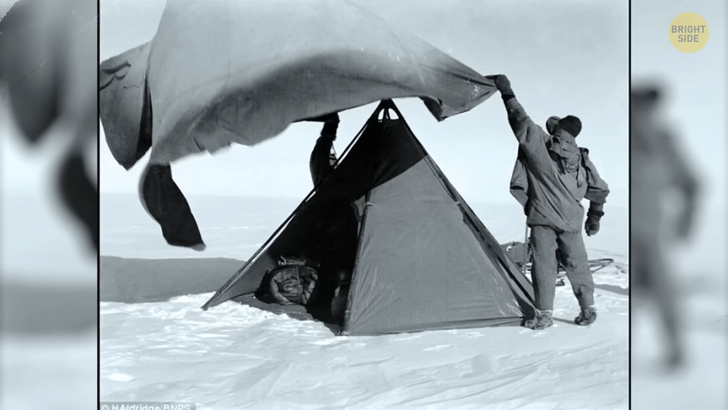
Antarctica has way more incredible features. Like the fact that it’s the home of 60 to 90% of the world’s fresh water. That’s because its ice sheet is the biggest on our planet, stretching across 5.4 million square miles. I’ll spare you the calculations, but that leaves only 1% of the continent ice-free. Antarctica’s ice reaches 2.7 miles thick at its deepest point, meaning half the height of Mount Everest! Should it ever melt completely, our sea levels would rise to roughly 200 ft.
It wasn’t always this cold here though. At some point in our planet’s history, Antarctica had the same average temperatures as the city of Melbourne has today. It took a lot of research, but scientists figured out that Antarctica’s temperatures could have reached up to 62.6°F. Sure, that was 40-50 million years ago, but if you think about it, it was at the same time when dinosaurs roamed our Earth.
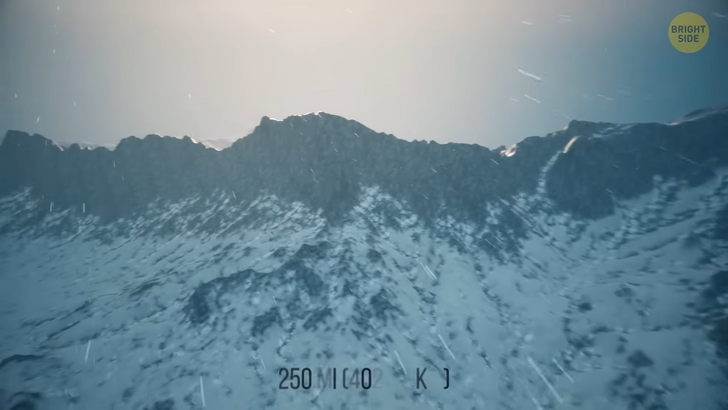
Time is also different on this icy continent. All the lines of longitude, that help us calculate different time zones, merge into a single point at the South Pole. Here, there are 6 months of daylight in the summer followed by 6 months of complete darkness during the colder season. So, scientists working here stay on average in the same time zone they’ve come from.
The Blood Falls aren’t a chapter of a thriller movie, they are merely a series of waterfalls located in one of the driest regions of Antarctica. They emerge from an underground lake, filled with a special type of bacteria. These little organisms use sulfates as fuel, instead of sugars, which makes them very intriguing for scientists. The water contained in this lake is so full of iron in it that it basically just rusts when it meets air. So, the reddish color of the waterfall also gives it its trademark name.
The Megalodon was the largest predator ever known in our planet’s history. In terms of its location, the Megalodon lived practically in all waters on our globe, except near the poles. The reason why there were no Megalodon teeth found in Antarctica is probably because the gigantic creature was adapted to only warm tropical and subtropical waters. If you plan to visit Antarctica by boat someday, just know you might not get there on a non-metallic boat.
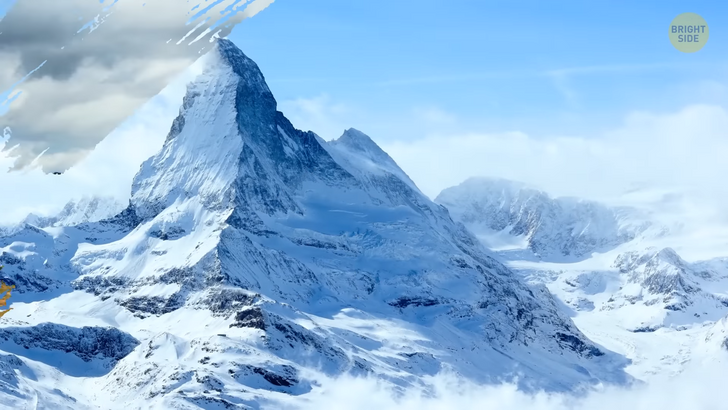
The hull of your transportation device must be made of either steel or aluminum to withstand the harsh weather conditions here. Antarctica isn’t home to a lot of bugs. In fact, there is only one true species of insect that calls this place home: it’s a wingless midge called Belgica Antarctica. This fly is so tiny that it only reaches 0.08 to 0.23 inches long. But it’s still the Antarctic’s largest terrestrial animal!
A lot of Antarctic fish also come with an antifreeze substance in their blood. They don’t necessarily need it for protection against the cold temperature, but mostly against touching ice. These anti-freezes are made up of large glycoprotein molecules. They surround any small ice crystals that may form, making sure they don’t spread throughout the animal’s tissues, which could cause a lot of damage. They also create a sort of small pillow, blocking the sharp ice crystals, so they are less likely to cause any pain. It also doesn’t rain a lot here on this icy continent, but one amazing meteorological quirk of Antarctica is that it’s full of diamond dust!
This dust is basically small ice crystals that pop out of humid air close to the Earth’s surface. Think of it like an icy fog. As they flow through the air and get touched by sunlight, they begin to sparkle, making visitors here feel like they are surrounded by diamonds. It’s probably the last place you’d want to go into labor, but in 1978, the first person was born here, ever. Emile Marco Palma was its name, and ever since, 10 other people have been born here in Antarctica.
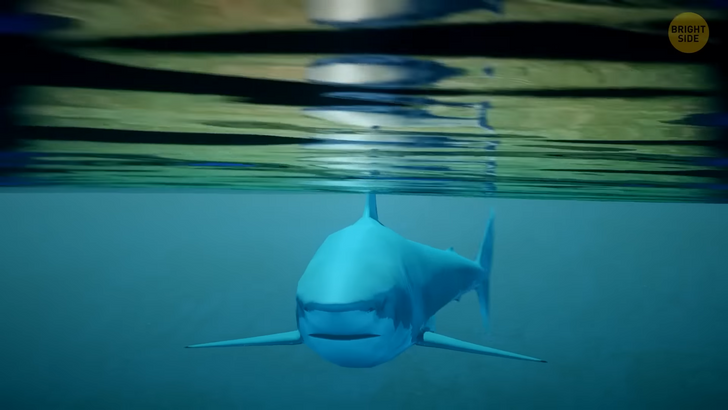
There’s a lake on this icy continent that is so full of salt, it makes it impossible for it to freeze over, even if temperatures can go as low as 5 degrees F! That’s because pure water freezes at 32°F. Water that has salt in it (or any other substance for that matter) will still freeze but at a way lower temperature. That lower temperature is adjustable, depending on the substance itself and the amount that has been placed into the water.
Antarctica was the last official continent to be discovered. It remained completely unseen until the 1820s. But it took another 20 years to confirm it was actually a continent and not just a group of icy islands. Just because it’s really cold here doesn’t mean you can’t go on a date here!
One December night, an American scientist that was posted in Antarctica logged into a dating app simply out of curiosity. He was certain no other profiles would show up, but to his surprise, he found someone soon enough. Another researcher who was stationed just 45-minutes away — by helicopter, of course. They eventually got together and went on the first date in Antarctica ever recorded!
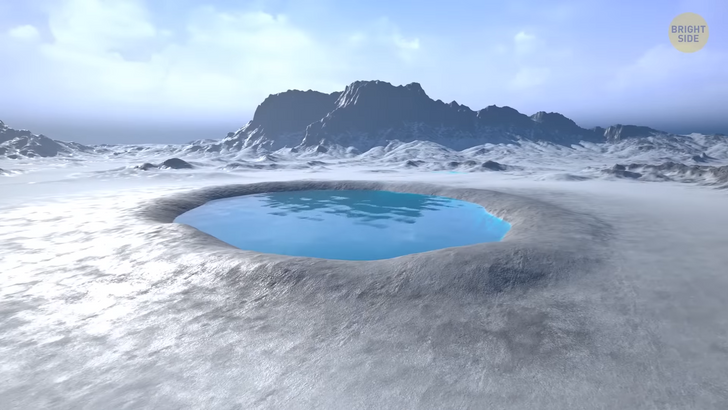
Apart from ice, this continent has something else way more abundantly than any other piece of land on Earth: meteorites! If we look at the research done by scientists, meteorites have equal chances of reaching any place on our planet. However, once they go through our atmosphere, the situation is a bit more complex. That’s because different climates on our planet, like the humid ones found near the jungle, have a lot of moisture and oxygen which will corrode most meteorites.
The climate in Antarctica is really dry, so the possibility of meteorites corroding is little to none. More so, it’s way easier to spot these rocks on the icy, white surface of this area, than in any other place on Earth. If you’re not scared of the cold, you’ll surely freak out when you hear about the winds here. That’s because Antarctica is for the most part the windiest place on Earth. Wind speeds have been reported here to reach even 200 mph!











